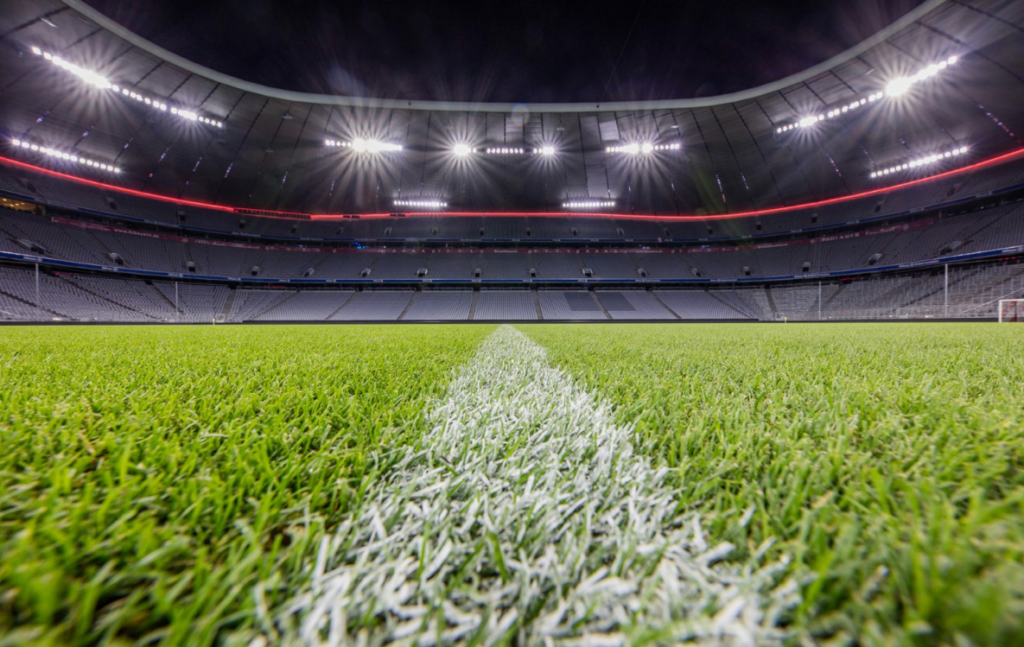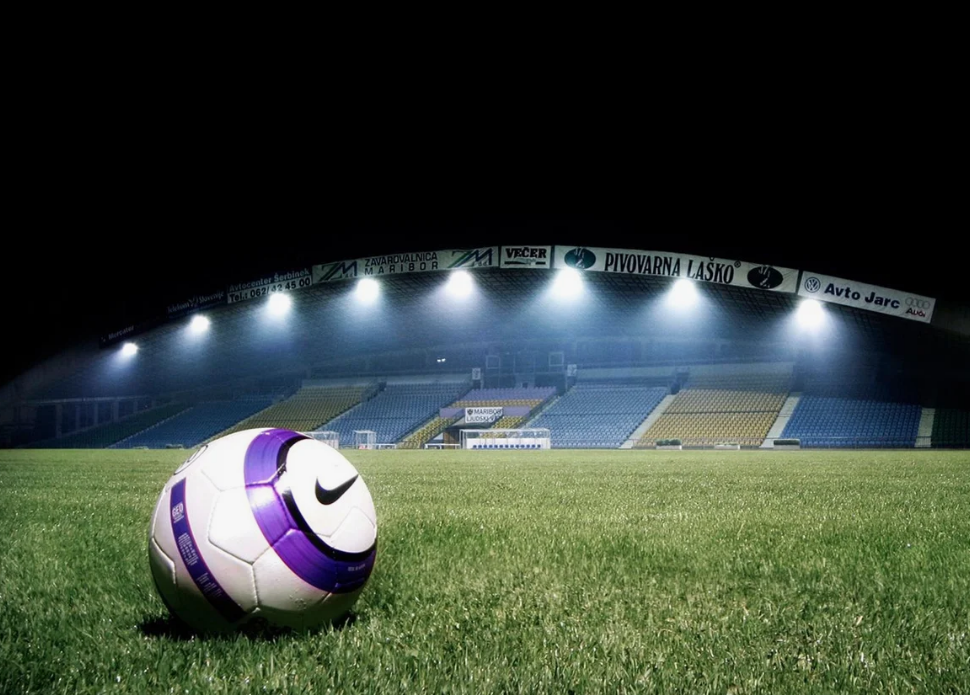A soccer field is typically 100-130 yards long and 50-100 yards wide, with specific dimensions varying. Soccer field dimensions can impact gameplay and strategy, influencing player positioning and movement during matches. The size of a soccer field is standardized for professional games but may vary for youth or recreational play. Understanding the dimensions of a soccer field is essential for players, coaches, and referees to ensure fair and competitive gameplay. Proper field dimensions contribute to the overall experience and success of soccer matches, emphasizing the importance of accurate measurements and markings.
Whether it’s a local park field or a professional stadium, the dimensions of a soccer field play a crucial role in the beautiful game.
Dimensions of a Soccer Field

History of Soccer Fields
The history of soccer fields is fascinating, as it reflects the evolution of the sport and its regulations over time. The dimensions of a soccer field have undergone significant changes, shaping the game we know today.
Evolution of Field Size- Dimensions of a Soccer Field
Throughout history, the dimensions of a soccer field have evolved to accommodate the changing nature of the game. The standard soccer field size in meters has seen alterations over the years, reflecting the need for a balance between skill and physicality.
Regulations Over Time- Dimensions of a Soccer Field
The regulations governing soccer field dimensions in feet have been refined over time to ensure fairness and consistency in the game. From the establishment of specific measurements to the introduction of international standards, the evolution of regulations has played a crucial role in shaping the modern soccer field.
Standard Soccer Field Measurements
Length And Width
The standard soccer field length is approximately 100 to 130 yards, while the width ranges from 50 to 100 yards.
Goal Size
The regulation goal size for a soccer field is 8 feet high and 8 yards wide.
Penalty Area Dimensions
- The penalty area, also known as the 18-yard box, extends 18 yards from the goal line.
- It is 44 yards wide and 18 yards deep.
Variations In Field Dimensions
Soccer field dimensions vary but typically range between 100-130 yards in length and 50-100 yards in width, with professional fields at the larger end of the spectrum. The size of a soccer field can impact gameplay and strategy.
Soccer is a sport that has been played for centuries and is enjoyed by millions of people worldwide. The dimensions of a soccer field in feet are regulated by FIFA, but there are variations in field dimensions that are allowed for smaller or larger fields. Let’s take a look at some of the variations in field dimensions that are commonly found on soccer fields.
Small-sided Fields
Small-sided fields are commonly used for youth soccer and recreational leagues. These fields are smaller in size and are designed to accommodate fewer players. The dimensions of small-sided fields are typically between 30-50 yards wide and 50-80 yards long. These fields can be rectangular or square and have smaller goals than standard soccer fields.
International Standard Vs Local Variations
International standard soccer fields have specific dimensions that are regulated by FIFA. The dimensions of a FIFA soccer field are 100-130 yards long and 50-100 yards wide. However, local variations in field dimensions are allowed for smaller or larger fields. Some countries have their regulations for soccer field size in meters, which may differ from the FIFA regulations.
Labeled Soccer Field Dimensions
Regulation Soccer Field Dimensions
Regulation of soccer field dimensions is important for competitive play and tournaments. These fields must adhere to the FIFA regulations for soccer field size. The standard soccer field dimensions ensure that all players have an equal playing field, regardless of location or climate.
Goal Posts on A Soccer Field
The goalposts on a soccer field are an important part of the game. They are located at each end of the field and are 8 yards apart. The crossbar of the goal is 8 feet high, and the posts are 8 feet apart. The goal area, also known as the penalty box, is 44 yards long and 18 yards wide.
Soccer Field Dimensions Metric
Soccer field dimensions can be expressed in metric units as well. The length of a soccer field is between 90-120 meters, and the width is between 45-90 meters. The penalty box is 40 meters long and 16.5 meters wide, while the goal box is 20 meters long and 6 meters wide. The penalty spot is 11 meters from the goal line.
Orientation of Soccer Fields
The orientation of soccer fields is also an important consideration. The field must be oriented in a north-south direction, with the halfway line running from one goal to the other. The sun should be behind one of the goals, so it does not interfere with the players’ vision during the game.
Soccer Field Box Dimensions
The soccer field box dimensions are regulated by FIFA and are an important part of the field. The goal box is 20 yards long and 6 yards wide, while the penalty box is 44 yards long and 18 yards wide. The penalty spot is located 12 yards from the goal, and the corner arc has a radius of 1 yard. In conclusion, the dimensions of a soccer field are important for ensuring fair play and competitive matches. While FIFA regulations provide standard soccer field dimensions, there are variations in field dimensions that are allowed for smaller or larger fields. Understanding the different variations in soccer field dimensions is essential for coaches, players, and referees.
Impact of Field Size on Gameplay
When it comes to the game of soccer, the size of the field plays a crucial role in shaping the gameplay. The dimensions of the soccer field have a significant impact on various aspects such as tactics and strategies employed, as well as the positioning of players on the field. Understanding the influence of field size on gameplay is essential for both players and coaches to optimize their performance and strategy.

Tactics and Strategies
The size of the soccer field directly affects the tactics and strategies employed by teams. A larger field allows for more space and encourages a possession-based style of play, with an emphasis on ball movement and positional play. On the other hand, a smaller field promotes a compact and defensive approach, focusing on quick transitions and pressing the opposition. Coaches must adapt their tactics based on the dimensions of the field to exploit the available space effectively.
Player Positions
The dimensions of the soccer field also dictate the positioning of players during the game. Wider fields require wingers to cover more ground and provide width to the team’s attack, while narrower fields demand compact positioning to maintain defensive stability. Midfielders play a crucial role in controlling the game, and their positioning is influenced by the size of the field, impacting their ability to support both attack and defense effectively.
Influence of Field Dimensions on Player Development
Field dimensions play a crucial role in the development of soccer players. The size of the field directly impacts the players’ speed, decision-making, and technical skills. Understanding how field dimensions influence player development is essential for coaches and organizations aiming to nurture young talents and enhance the performance of professional players.
Youth Soccer Fields
Youth soccer fields are the foundation for developing young athletes. The dimensions of these fields significantly impact the learning and skill development of children. Smaller fields encourage quick decision-making and close ball control, while larger fields promote endurance and strategic positioning. Coaches must consider the appropriate field size to optimize the development of youth players.
Professional Training Facilities
Professional training facilities are designed to refine the skills of elite players. The field dimensions in these facilities are meticulously planned to challenge players and enhance their performance. Smaller training fields can help players improve their close control and passing accuracy, while larger fields provide ample space for tactical drills and match simulations. The dimensions of professional training facilities are tailored to foster well-rounded player development.
Maintenance of Soccer Fields
Maintaining soccer fields involves adhering to specific dimensions, including a length of 100-130 yards and a width of 50-100 yards. The field is marked with lines, goalposts, and corner flags, contributing to a professional playing surface that meets regulatory standards.
Regular maintenance ensures the field remains safe and conducive to gameplay.
Maintenance of Soccer Fields Soccer fields require regular maintenance to ensure optimal playing conditions and player safety. Proper maintenance involves various aspects such as grass length and type, pitch markings, and overall field care. Here, we will delve into the essential dimensions of a soccer field and the specific maintenance requirements associated with them. Grass Length and Type The grass length and type play a crucial role in the quality and playability of a soccer field. The ideal grass length for a soccer field typically ranges between 0.5 to 1.25 inches. This ensures a uniform surface and enables players to make precise movements and ball control. Additionally, the type of grass used on the field, such as Bermuda grass or Kentucky bluegrass, significantly impacts the field’s resilience and durability. Pitch Markings Pitch markings are fundamental for defining the boundaries and key areas of the soccer field. These markings include the center circle, penalty areas, goal areas, and touchlines. Regularly inspecting and repainting these markings is essential to maintain their visibility and accuracy.
Technological Advancements In Field Design
Soccer field design has evolved significantly in recent years, with technological advancements revolutionizing the way fields are constructed and maintained. These innovations have not only improved the playing experience for athletes but have also enhanced the durability and sustainability of the fields. From hybrid turf systems to underground heating, the integration of technology has had a profound impact on the dimensions and overall quality of soccer fields.
Hybrid Turf Systems
Hybrid turf systems have emerged as a game-changer in the realm of soccer field design. By combining natural grass with synthetic fibers, these systems offer enhanced durability and resilience. The integration of synthetic fibers into natural grass enhances the field’s ability to withstand heavy usage, ensuring that it maintains its pristine condition even after numerous games and practices. This innovative approach to turf design has significantly impacted the maintenance and longevity of soccer fields, ultimately leading to a more consistent and reliable playing surface for athletes.
Underground Heating Systems
Underground heating systems have revolutionized the way soccer fields are managed in cold climates. By utilizing a network of underground pipes and heating elements, these systems effectively prevent the formation of ice and snow on the field, allowing for year-round play regardless of the weather conditions. This technological advancement has not only expanded the operational window of soccer fields but has also minimized the risk of damage caused by freezing temperatures, ultimately contributing to the overall longevity and sustainability of the field.
Future Trends In Soccer Field Dimensions
Discover the evolution of soccer field dimensions, with changes reflecting modern gameplay strategies and player needs. As the sport evolves, field sizes adapt to enhance gameplay dynamics and player performance. Stay updated on the latest trends shaping the future of soccer field dimensions.
Soccer, also known as football, is a sport that is loved by millions of people worldwide. The dimensions of a soccer field play a crucial role in the game, as they affect the flow and style of play. In recent years, there have been discussions about potential future trends in soccer field dimensions, including adaptations to climate change and innovations in sustainability.
Adaptations To Climate Change
With the increasing awareness of climate change, there have been discussions about potential adaptations to soccer field dimensions to make them more sustainable. Some of the proposed changes include:
- Using turf that requires less water
- Creating fields that are more resistant to extreme weather conditions
- Adjusting the orientation of the field to take into account changing weather patterns
These changes not only make soccer fields more sustainable but also ensure that games can continue to be played even in the face of extreme weather conditions.

Innovations In Sustainability
Apart from climate change adaptations, there have also been innovations in sustainability that could affect soccer field dimensions. For instance, there have been discussions about creating fields that generate their energy, such as using solar panels. Additionally, there have been proposals to create soccer fields that are made from recycled materials, such as rubber from old tires.
Conclusion
Understanding the dimensions of a soccer field is crucial for players and fans alike. The size and layout impact the game dynamics significantly. Proper field dimensions ensure fair play and strategic gameplay. Knowing these dimensions enhances the overall soccer experience for everyone involved.

